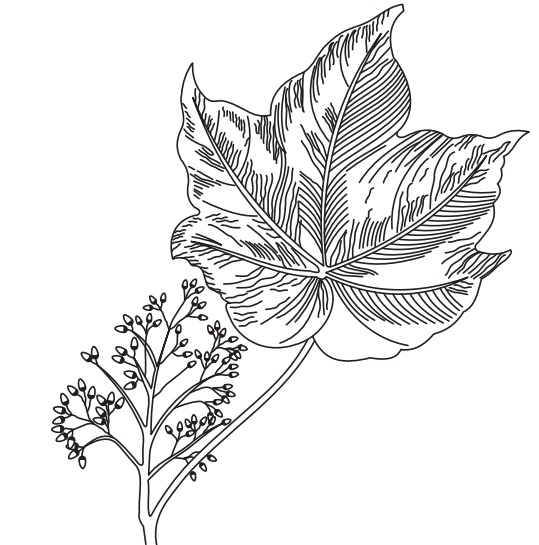Karaya Gum
| Home | | Pharmacognosy |Chapter: Pharmacognosy and Phytochemistry : Drugs Containing Carbohydrates and Derived Products
Gum karaya is a dried, gummy exudates obtained from the tree Sterculia urens (Roxburgh); Sterculia villosa (Roxburgh), Sterculia tragacantha (Lindley) or other species of Sterculia, belonging to family Sterculiaceae.
KARAYA GUM
Synonyms
Indian tragacanth, Sterculia gum, Karaya gum, Bassora
tragacanth, kadaya, mucara, kadira, katila, kullo.
Biological Source
Gum karaya is a dried, gummy exudates obtained from the tree
Sterculia urens (Roxburgh); Sterculia villosa (Roxburgh), Sterculia tragacantha (Lindley) or other
species of Sterculia, belonging to family Sterculiaceae.
Geographical Source
The S. urens is
found in India especially in the Gujarat region and in the central provinces.
Collection and Preparation
The gum is obtained from the Sterculia species by making incisions and, thereafter, collecting
the plant exudates usually after a gap of 24 h. The large irregular masses of
gums (tears) which weigh between 250 g to 1 kg approximately are hand picked
and dispatched to the various collecting centres. The gum is usually tapped
during the dry season spreading over from March to June. Each healthy fully
grown tree yields from 1 to 5 kg of gum per year; and such operations may be
performed about five times during its lifetime. In short, the large bulky lumps
(tears) are broken to small pieces to cause effective drying. The foreign
particles, for example, pieces of bark, sand particles and leaves are removed.
Thus, purified gum is available in two varieties, namely:
1) Granular
or Crystal Gum: Having
a particle size ranging
between 6 to 30 mesh, and
2) Powdered
Gum: Having
particle size of 150 mesh
Morphology


History
Karaya gum has been used commercially for about 100 years.
Its use became widespread during the early 20th century, when it was used as an
adulterant or alternative for tragacanth gum. However, experience indicated
that karaya possessed certain physiochemical properties that made it more
useful than tragacanth; furthermore, karaya gum was less expensive.
Traditionally, India is the largest producer and exporter of karaya gum.
Increasing amounts are exported by African countries. Currently the gum is used
in a variety of products, including cosmetics, hair sprays, and lotions, to
provide bulk. The bark is astringent.
Chemical Constituents
Karaya gum is partially acetylated polysaccharide
contain-ing about 8% acetyl groups and about 37% uronic acid residues. It
undergoes hydrolysis in an acidic medium to produce D-galactose, L-rhamnose,
D-galacturonic acid and a trisaccharide acidic substance. It contains a
branched heteropolysaccharide moiety having a major chain of 1, 4-linked α- D-galacturonic acid along with 1, 2-linked
L-rhamnopyranose units with a short D-glucopyranosy-luronic acid containing the
side chains attached 1→3 to the main chain, that is,
D-galactouronic acid moieties.
Chemical Test
1) To 1 g of powdered Karaya Gum, add 50 ml of water and mix. A viscous solution is produced and it is acidic.
2) Add 0.4 g of powdered Karaya Gum to 10 ml of an ethanol-water mixture (3:2), and mix. The powder is swelling.
3) It readily produces a pink colour with a solution of ruthenium red.
Uses
Karaya gum is not digested or absorbed systemically.
Medici-nally, karaya gum is an effective bulk laxative, as gum par-ticles
absorbs water and swells to 60–100 times their original volume. The mechanism
of action is an increase in the volume of the gut contents. Karaya gum should
be taken with plenty of fluid and it may take a few days for effects to be
noticeable. It also has been used as an adhesive for dental fixtures and ostomy
equipment, and as a base for salicylic acid patches. The demulcent properties
of the gum make it useful as an ingredient in lozenges to relieve sore throat.
A protective coating of karaya gum applied to dentures has been shown to reduce
bacterial adhesion by 98%. The use of karaya gum as a carrier for drugs with
differing solubility in aqueous medium has been investigated. In pharma
industry, it is also used as emulsifier, thickener and stabilizer. Karaya gum
is also used in paper and textile industries.
Adulterant and Substitutes
It is used as a substitute for gum tragacanth.
Related Topics
